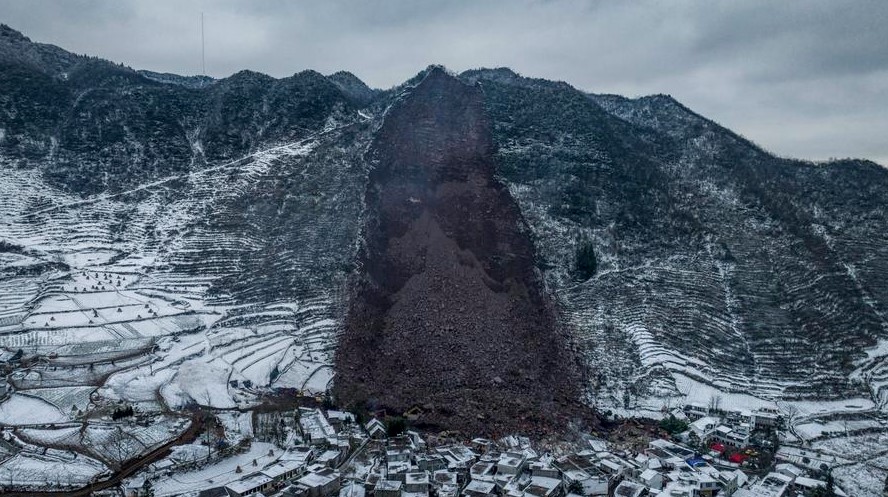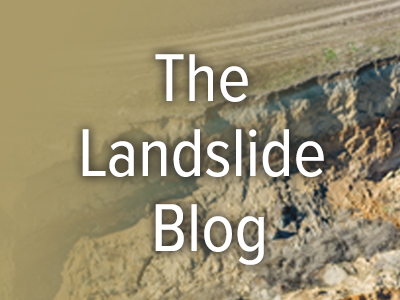The Landslide Blog is written by Dave Petley, who is widely recognized as a world leader in the study and management of landslides.
On 22 January 2024, the Liangshui landslide struck the Wumeng Mountain area of China, killing 44 people. I blogged about this significant event at the time, including the following Youtube video that provides drone footage of the aftermath of the landslide:-
A first analysis of this failure (Wang et al. 2024) has just been published in the journal Landslides.
The landslide is located at [27.48078, 105.01231], striking Liangshui Village, which is located in Zhenxiong County in Yunnan Province. Wang et al. (2024) report that it had a volume of 70,000 m3. Xinhua released this image of the site:-

As the image above shows, this was a large rock slope failure high on the hillside (Wang et al. 2024 estimate an initial volume of 55,000 m3) that transitioned into a debris avalanche that struck the village. Fortunately, the runout was not particularly long. Modelling suggests that the entire event took less than 30 seconds, reaching a maximum velocity of about 30 m/sec.
The most intriguing aspect of this awful event is the timing. The landslide occurred in the winter when, as the video above shows, conditions were very cold. Wang et al. (2024) show that the source area started creeping in the early summer of 2023, and that this accelerated substantially in the autumn of that year. The authors suggest that the deformation allowed infiltration of water into the rock mass, which then froze in the days before the collapse, providing a frost-heave force that induced failure. This is a credible failure mechanism, although I wouldn’t preclude this being a simple progressive landslide that did not need a trigger event.
Intriguingly, they also note that “unregulated mining activities and mining-induced seismicity could have potentially exacerbated the deformation and instability of the slope to some extent. However, further evidence is necessary to establish their specific roles in contributing to the Liangshui landslide.”
That post-failure evaluation of the site of the Liangshui landslide indicates that there was precursory deformation, which hints that the event could have been anticipated with appropriate monitoring. To establish systems that allow this to occur must be an aspiration for the landslide community, but this remains a distant prospect over large areas.
Reference
Wang, Q., Xing, A., Liao, L. et al. 2024. Insights into small landslides inducing major disasters in the Wumeng Mountain area from the Liangshui landslide. Landslides. https://doi.org/10.1007/s10346-024-02414-6


